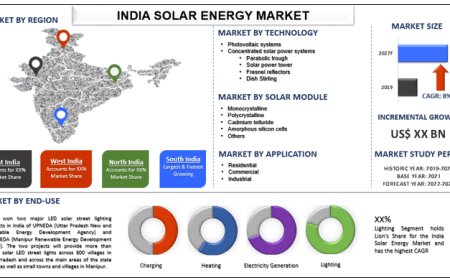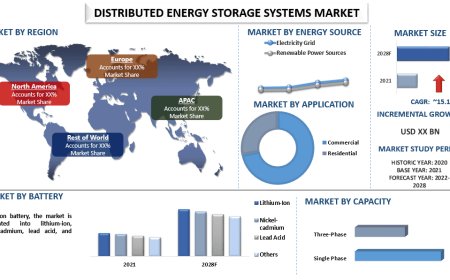Exploring the Rise of Silicon Photonics in Data Centers and Telecom"
The Silicon Photonics Market is rapidly expanding due to rising demand for faster data transmission and integration of photonics with electronics.

Silicon photonics is an emerging technology that integrates optical components into silicon chips to enable high-speed data transmission using light. With the surge in demand for faster, more energy-efficient data processing and communication systems, the global silicon photonics market is experiencing significant growth across diverse sectors, including data centers, telecommunications, healthcare, and defense.
Market Growth Drivers
Exploding Data Volumes:
The exponential rise in global data generation, driven by cloud computing, IoT, and streaming services, has created an urgent need for high-throughput and low-latency solutions. Silicon photonics enables rapid data transmission with reduced power consumption, making it ideal for hyperscale data centers.
5G and AI Technologies:
As 5G deployments expand and AI workloads increase, silicon photonics provides scalable and efficient infrastructure to handle massive data traffic and computation demands. Its ability to interconnect computing resources with low energy loss is a critical enabler.
Miniaturization and Cost Efficiency:
Silicon photonics leverages existing CMOS fabrication processes, allowing the integration of optical and electronic functions on a single chip. This integration lowers costs and simplifies manufacturing compared to traditional fiber optics.
Key Components in Focus
Optical Transceivers: These are widely used in data centers for sending and receiving high-speed data signals via light.
Modulators & Detectors: Critical for encoding and decoding data in optical communication systems.
Photonic Integrated Circuits (PICs): These chips integrate multiple photonic functions, reducing the footprint and enhancing performance.
Applications
1. Data Centers
Silicon photonics is revolutionizing server-to-server and rack-to-rack communication. With higher bandwidth needs and energy concerns, data centers are embracing this technology to stay competitive and green.
2. Telecommunication
Fiber-optic backhaul networks powered by silicon photonics ensure faster and more reliable service, especially in 5G infrastructures and long-haul communication.
3. Healthcare and Biosensing
Silicon photonics enables advanced diagnostic tools and lab-on-chip solutions for biomedical applications, offering compact and sensitive platforms for real-time analysis.
4. Military and Aerospace
In defense systems, silicon photonics enhances data integrity, security, and speed in mission-critical communication and sensing devices.
Regional Insights
North America: Leads the market due to significant investments in cloud infrastructure, AI research, and strong presence of major players like Intel, Cisco, and IBM.
Europe: Showing growth in R&D, particularly in Germany, the UK, and the Netherlands.
Asia-Pacific: Expected to grow fastest, fueled by expanding telecom sectors, increased semiconductor manufacturing, and government initiatives supporting photonics in countries like China, Japan, and South Korea.
Market Challenges
Thermal Management Issues: Silicon has limitations in handling thermal effects, which may affect signal integrity.
Fabrication Complexity: Despite compatibility with CMOS, integrating photonics requires precise manufacturing techniques.
Standardization: Lack of industry-wide standards can hinder broader adoption.
Competitive Landscape
Major companies dominating the market include:
Intel Corporation
Cisco Systems
IBM
Broadcom Inc.
Luxtera (Acquired by Cisco)
GlobalFoundries
Acacia Communications (Now part of Cisco)
These firms focus on strategic partnerships, acquisitions, and product innovation to strengthen their market positions.
Future Outlook
The silicon photonics market is poised for robust growth, projected to exceed USD 5 billion by 2030, driven by continuous demand from AI, cloud, and telecom ecosystems. Future developments are expected in integrated quantum photonics, on-chip light sources, and co-packaged optics, which will further transform high-speed computing and networking.
Conclusion:
Silicon photonics holds the key to the next evolution in high-speed data transmission. As the world becomes increasingly data-driven, this technology will form the backbone of future communication, processing, and sensing systems, offering unmatched scalability, speed, and cost-efficiency.
See Detailed Insights On:-https://alignstrategicimperative.com/industry/silicon-photonics-market/








































